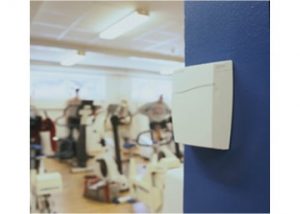COVID and CO2
more information....
The best indicator of the potential for virus transmission indoors (home, office, or school) is the carbon dioxide (CO2) concentration. While lower CO2 concentrations indicate that enough fresh air is being brought in from outside the building higher CO2 concentrations indicate the lack of fresh air being brought in from outside the building.
Measuring carbon dioxide (CO2) is simple, cost effective, and can be a fun learning experience, too. By understanding that CO2 levels are a vital part of improving Indoor Air Quality (IAQ) individuals can dramatically influence a more positive lifestyle and well-being. Poor Indoor Air Quality can lead to reduced cognitive abilities, respiratory ailments live asthma and allergies, an increased rate of simple viruses like the flu and common cold, and the spread of severe viruses like COVID-19. By monitoring CO2 levels throughout indoor spaces individuals can prevent airborne illness from being transported as well as create a healthier indoor air environments.
what level of CO2 indicates good air quality?
Short answer: 800 ppm (parts per million).
But, this does not mean that if indoor CO2 concentration is 801 ppm then there are significant air quality problems. It is better to keep the values in perspective and within context.
Outdoor fresh air CO2 concentration is approximately 400 to 450 ppm.
Typically, indoor air CO2 concentration is approximately 500 to 700 ppm. When CO2 steadily increases above 800 ppm, then this indicates that indoor ventilation and circulation can be improved.
Studies have found that continuous exposure to CO2 concentrations above 1000 ppm can lead to poor concentration, lethargy, and drowsiness.
Short term exposure to CO2 levels above 1.5 % (or 15,000 ppm) is a safety hazard and must be avoided.
A time weighted average exposure of 5,000 ppm (or 0.5 %) is also considered a safety hazard and must be avoided.
Exposure to CO2 levels of 100,000 ppm, or 10 %, can lead to asphyxiation, unconsciousness and death.
health concerns and CO2
If you have health concerns, or are worrying about exposure to indoor CO2 and the transmission of COVID, Edaphic Scientific strongly recommends you consult your local doctor or general practitioner (GP) for further advice. Edaphic Scientific is not a health website nor do we provide specific health advice for any individual or situation. Information and details provided on the Edaphic Scientific website should be regarded as general interest only.



